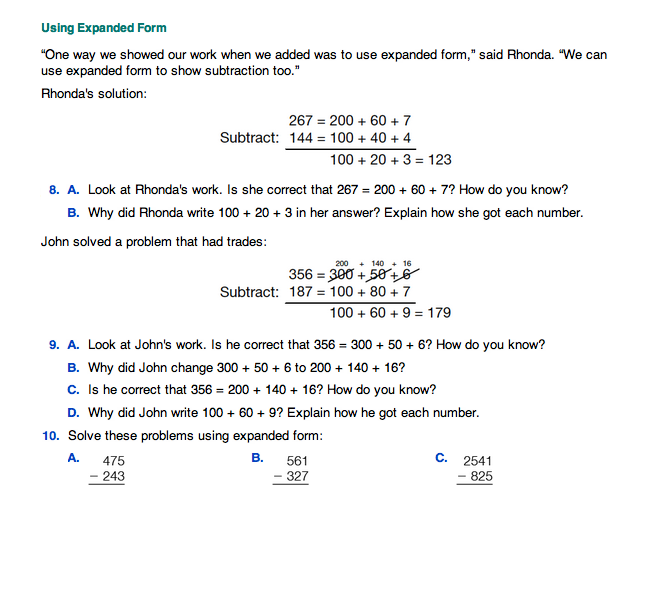Subtraction
Est. Class Sessions: 2–3Developing the Lesson
Part 5. Showing Work with Expanded Form
Students used expanded form in Lesson 4 to solve addition problems. They can also use expanded form to subtract. Use Questions 8 and 9 in the Student Guide to analyze the expanded form strategy. Ask students to solve the problems in Question 10 using expanded form.
Use these discussion prompts:
Writing out a solution in expanded form may help some students solidify their understanding of the trading involved in subtraction. The purpose of trading is to express the minuend in a way that makes it possible to subtract. The trades give a new partition of the same number. But students sometimes miss the point that it must be the same number and think the trades changed the value of the number.
Using expanded form is not a particularly efficient way to solve subtraction problems. However, writing a solution in expanded form can help students better understand the trades involved in subtracting.












